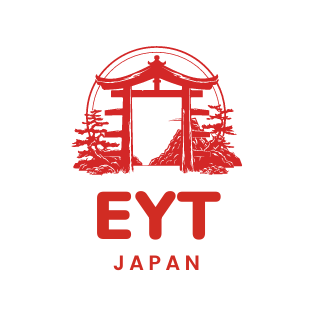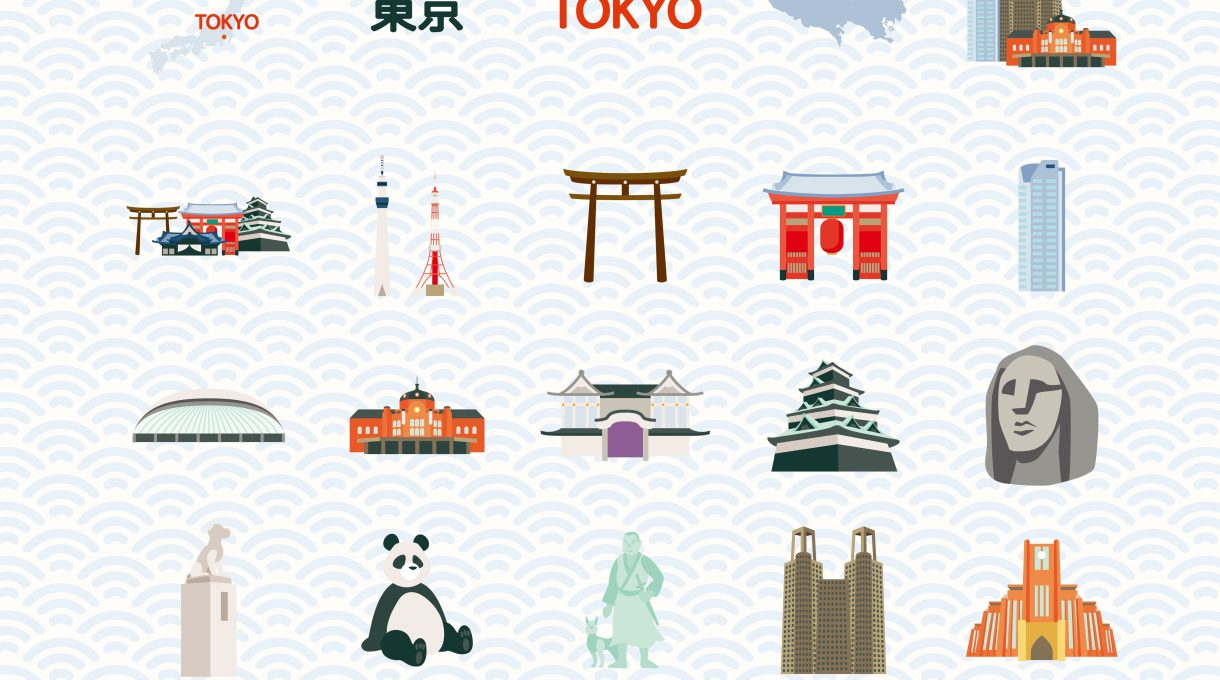Tokyo has various faces of its neighborhoods. When traveling, there are often preconceived “images” that come to mind.
For example, when I first visited Italy, my preconceived image was “Italy is about historical landmarks and food.” Even though I could only stay for about a week, I visited three cities: Milan, Rome, and Florence. I assumed all these cities would be full of historical sites, but to my surprise, Milan was a business hub, Rome was rich in historical landmarks, and Florence had a lively atmosphere. Since I only stayed for about two nights in each city, it’s just my impression, but it differed from what I had imagined. It was a very enjoyable trip with each city having its own unique charm.
It’s a waste to let preconceived notions limit your experiences when you don’t know much about a place. Of course, there’s also the joy of leisurely exploring one place! In fact, I sometimes spend about a week in one city. However, I believe it’s a shame to say, “I didn’t go because I didn’t know,” after investing money and time into a trip.
Now, going back to the discussion of the “various faces of Tokyo,” Tokyo encompasses business districts, bustling streets, nightlife districts, old towns, nature spots, temples, and more.
Places like Shibuya, Harajuku, and Shinjuku are famous in Tokyo. They boast tall buildings, advertisements, technology, department stores, and trendy eateries, but Tokyo is not just about these areas!
Business Districts
Tokyo Station, Yurakucho Station, Otemachi Station, and Nihonbashi Station fall into this category. During weekdays, these areas are bustling with businessmen, but on weekends, there are fewer people compared to weekdays. However, Tokyo Station has Shinkansen (bullet train) connections, and Yurakucho is within walking distance to Ginza Station, so even on weekends, these areas seem lively.
Bustling Streets Shibuya Station, Shinjuku Station, and Harajuku Station are notable. Especially Shibuya and Shinjuku are filled with high-rise buildings, fashion outlets, department stores, and eateries. There are many foreign tourists as well. Just walking around, you’ll find various shops, making it an enjoyable experience! You won’t get bored even if you spend the whole day there!
Nightlife Districts
Defining nightlife districts is tricky, but instead of stylish establishments, let me introduce you to streets that are like chaotic alleys loved by Japanese. It’s not like bars on the rooftops of Bangkok buildings but rather streets with many shops referred to as “red lanterns.”
・Shinbashi Station: Known as the holy land for salarymen in Japan. There are many inexpensive and delicious eateries. When you get off at Shinbashi Station, head to the “Ueno Kita” or “SL Square” exit! Once you’re out, you’ll find many drinking spots! By the way, it’s only a 10 to 15-minute walk from Shinbashi Station to Ginza Station. It’s interesting to compare the differences!
・Shinjuku Station: There’s a nightlife district called “Golden Gai.” It’s filled with small bars that can only accommodate 5 to 10 people. It’s quite a deep nightlife area and very popular among Japanese. There’s also Shinjuku-sanchome Station, which is a 5 to 10-minute walk from there.
・Akabane Station: Exit from the north ticket gate and head to the east exit. Note that there are two east exits, so be sure to exit from the north ticket gate. Once you’re at the east exit, you’ll see a big signboard that says “Ichiban Street” in Japanese. If you love alcohol, you’ll find it right away! It’s a city that alcohol enthusiasts can’t resist. It’s on the outskirts of Tokyo, and unlike Shibuya, Shinjuku, or Shinbashi, it’s not crowded with an overwhelming number of people.
・Nakano Station: Exit from the north gate. You’ll immediately see an arcade in front of you. While walking along the arcade, turn right at any corner. Suddenly, a deep nightlife district will appear! Just entering a side street changes the entire scenery!
Old Towns
In Japan, they’re referred to as “Shitamachi,” which roughly translates to “downtown.” It’s hard to explain, but think of it as the countryside of Tokyo. By the way, I was also born in the countryside of Tokyo.
In Shitamachi, you’ll find laid-back streets and shopping districts rather than tall buildings. Shopping streets serve as local hangout spots with eateries and miscellaneous shops lining the streets. Let me introduce you to some of them.
・Ueno Station: It’s a mix of old town and downtown. Ameyoko Shopping Street is famous.
・Tateishi Station: It’s like a picture-perfect shopping street of downtown. Tateishi Nakamise Shopping Street.
・Togoshi-ginza Station: It’s the longest shopping street in Tokyo, about 1.3 km long.
・Sendagi Station or Nippori Station: Yanaka Ginza is famous here. There’s a famous shaved ice shop called Himitsudo. This shopping street is a true representation of downtown.
And so on.
Nature
If we talk about parks:
・Yoyogi Park: It’s about a 15 to 20-minute walk from Shibuya Station. There’s also a Yoyogi Park Station, which is about a 5-minute walk from the park. It’s a green oasis in the heart of Tokyo, walkable from Shibuya Station. It’s the fifth largest park in Tokyo. On Saturdays and Sundays, there are many events, and food trucks are often stationed there.
Shinjuku Gyoen National Garden: It’s about a 10-minute walk from Shinjuku Station or a 1-minute walk from Shinjuku Gyoenmae Station. It’s more of a Japanese garden than a park. It’s a beautiful garden that you wouldn’t expect from the hustle and bustle of Shinjuku.
Shinjuku Gyoen National Garden WEB site
And so on.
If you want to fully enjoy the great outdoors, I recommend Okutama area and Mount Takao. The Okutama area refers to the area around Okutama Station. It takes about 110 minutes by train from Shinjuku via the Chuo Line, so it’s a bit far, but if you go early in the morning, a day trip is possible. The area around Okutama Station is full of nature, and from there, you can take a bus to places like Lake Okutama and Nippara Limestone Cave.
It’s so full of nature that you’ll wonder if this is really Tokyo.
Temples and Shrines
According to a survey by the cultural agency of the government, there are around 4,000 temples and shrines in Tokyo, both large and small. It’s a unique city where urban life blends with history. When you only know Japan, this scenery seems ordinary, but when you travel or do research, you find that this scene is quite rare, which can be surprising. In fact, Japanese people consider Tokyo, where urban life and history blend seamlessly, as just a normal sight!
・Sensoji Temple: The nearest station is Asakusa Station. There’s a temple called Sensoji Temple. It’s said to be the oldest temple in Tokyo, established in 628 AD. The area around the temple is known as Nakamise Street, lined with various souvenir shops and more.
・Zojoji Temple: There are several nearby stations that you can use to access it.
- JR Line / Tokyo Monorail: 10 minutes walk from Hamamatsucho Station
- Toei Subway Mita Line: 3 minutes walk from Onarimon Station, 3 minutes walk from Shiba Park
- Toei Subway Asakusa Line / Oedo Line: 5 minutes walk from Daimon Station
- Toei Subway Oedo Line: 7 minutes walk from Akabanebashi Station
- Tokyo Metro Hibiya Line: 10 minutes walk from Kamiyacho Station
It was established in 1393. Nearby is the Tokyo Tower. Even for Japanese people, it’s a somewhat unusual sight. About a 15-minute walk away is the Azabu area, and a few stops away by train is the Roppongi area. This area is a bit luxurious in Tokyo and has many high-end and delicious restaurants.
・Meiji Shrine: It was established in 1920, so it’s relatively new. It enshrines Emperor Meiji and Empress Shoken. The nearest stations are Harajuku Station or Meijijingu-mae Station. Both stations are in the same location, just on different lines. Meiji Shrine is about a minute’s walk from either station. It’s surprisingly quiet compared to the hustle and bustle of Harajuku. The grounds are also beautifully maintained. It’s adjacent to Yoyogi Park.
There are many other temples and shrines scattered throughout the city, both big and small!
While Tokyo is often called a “BIG CITY,” as you can see, it’s not just that! Tokyo encompasses various categories beyond the ones mentioned above! I recommend exploring “the Tokyo you don’t know” during your travels!

